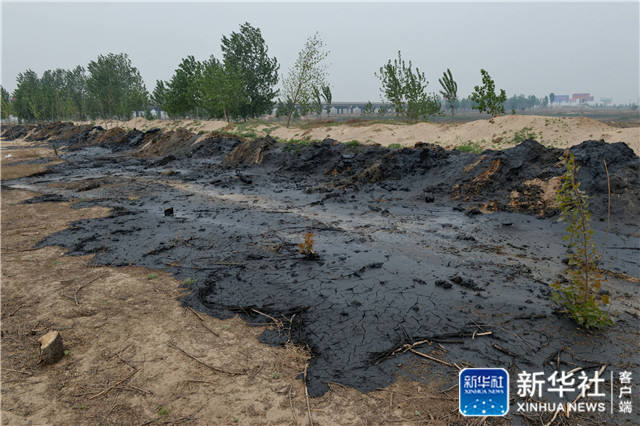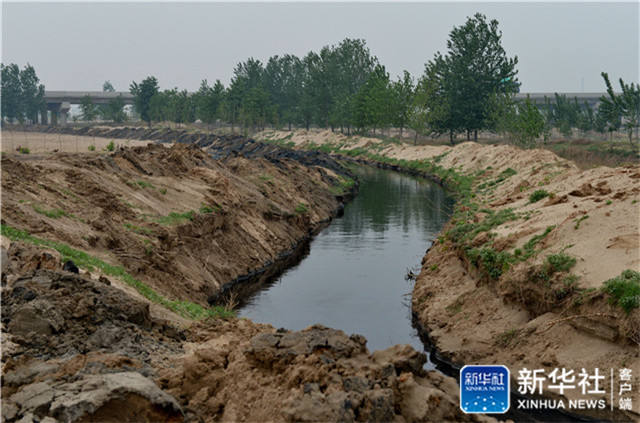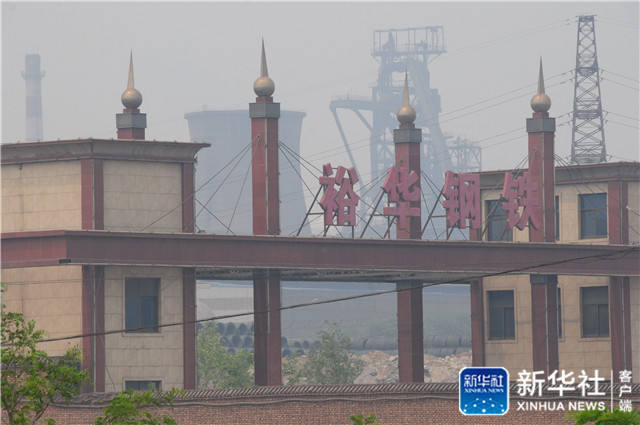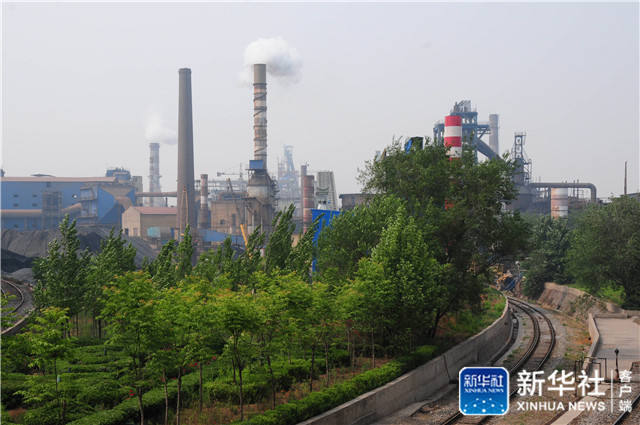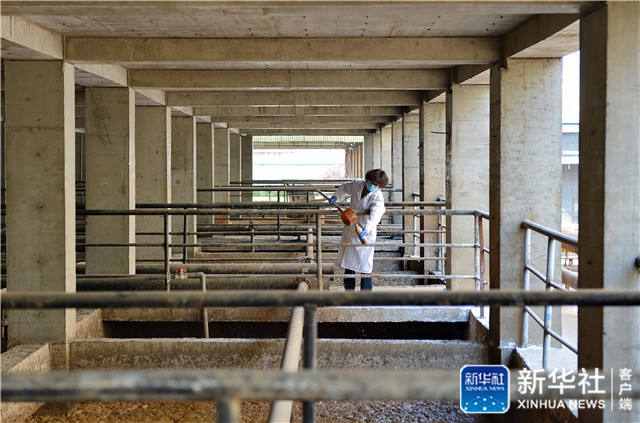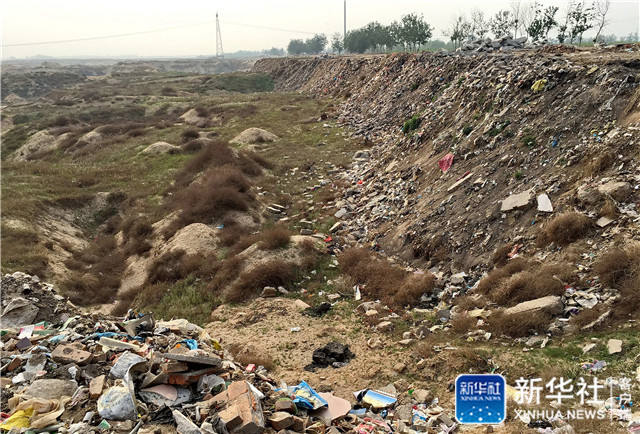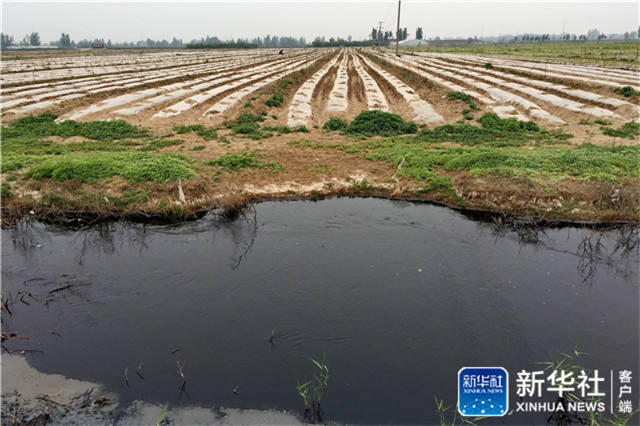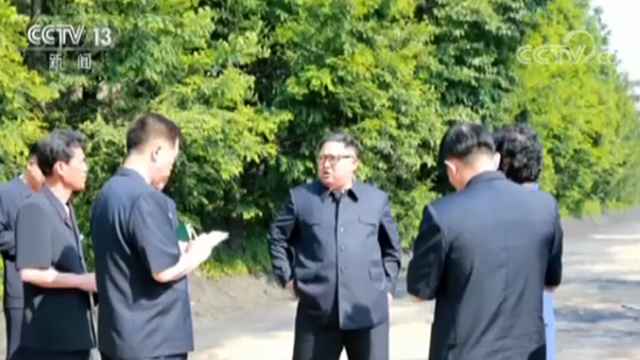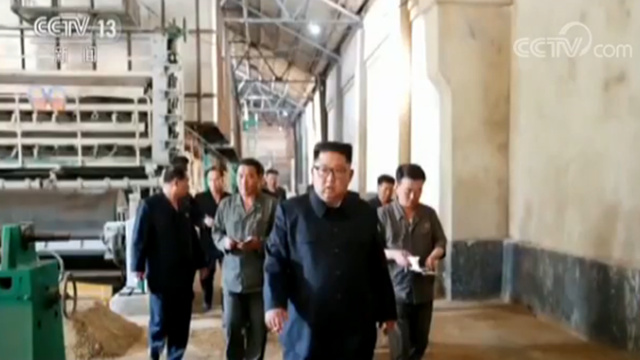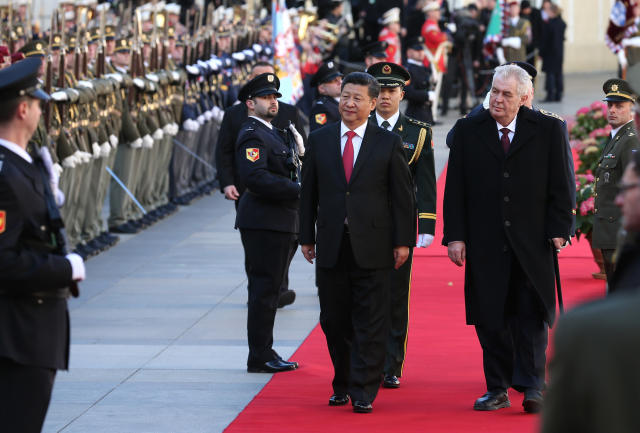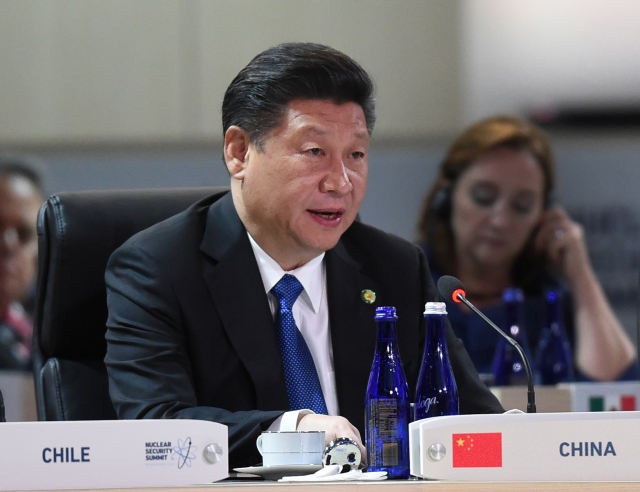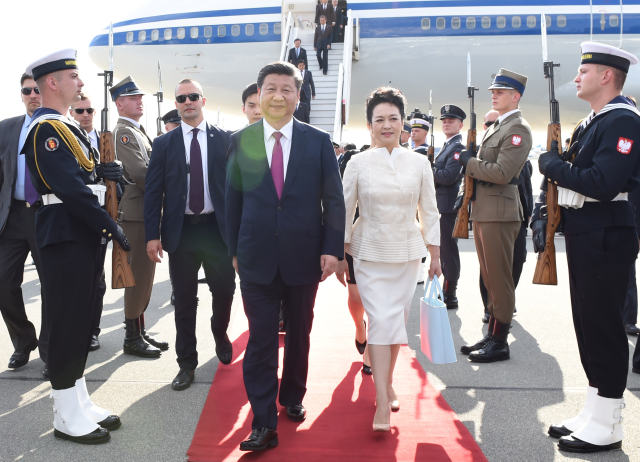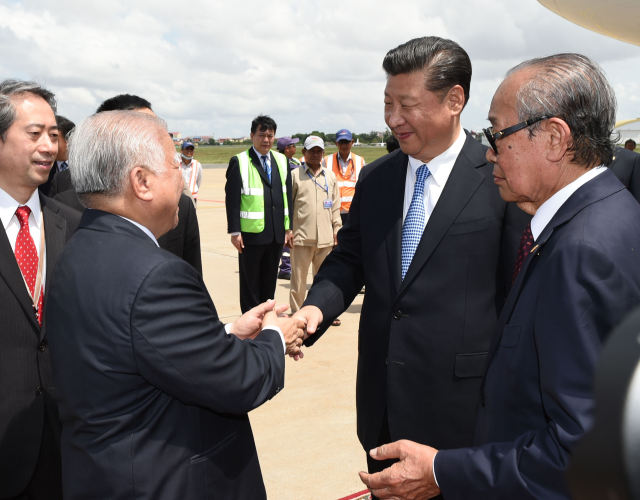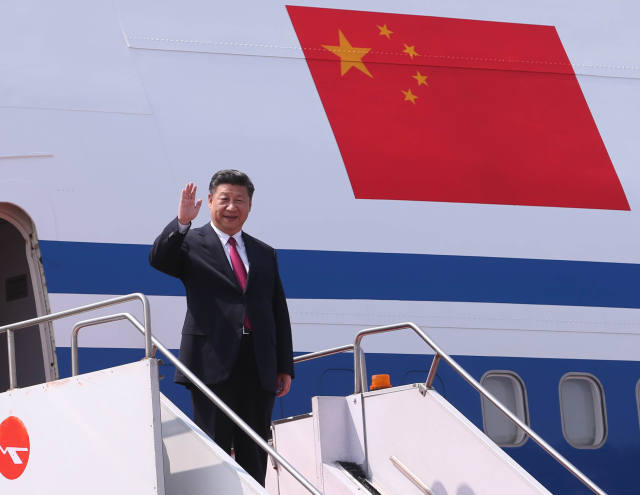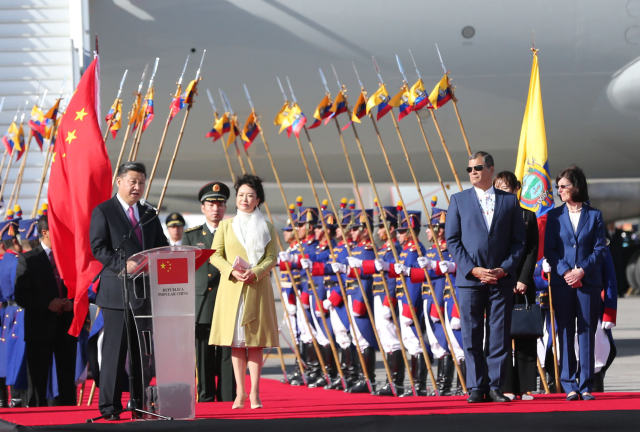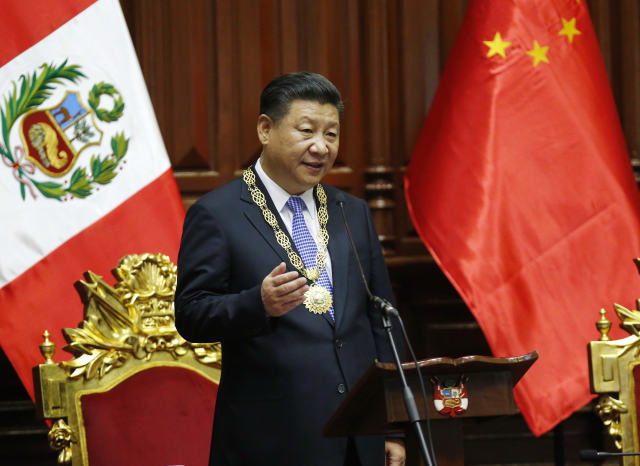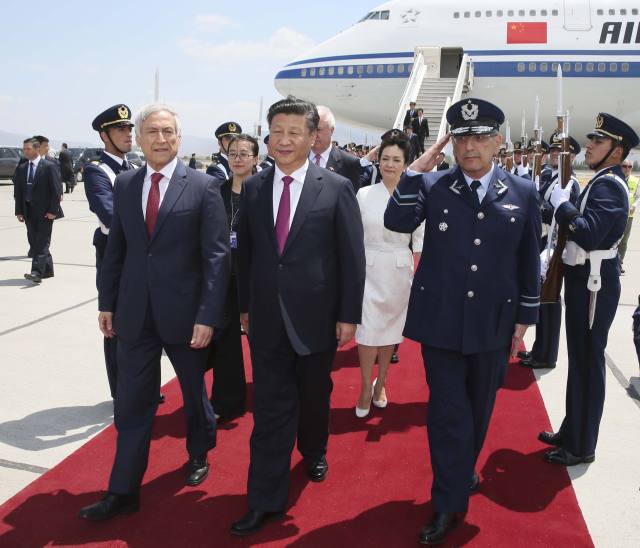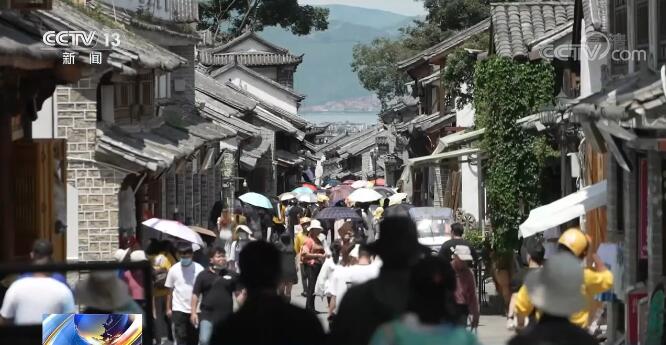See the news at 8: 00. During the third Belt and Road Summit Forum, 458 achievements were formed.
[Belt and Road Summit Forum]
Supreme leader talks with Russian President Vladimir Putin
At noon on October 18th, the Supreme Leader of president held talks in the Great Hall of the People with Russian President Vladimir Putin who came to China to attend the third Belt and Road International Cooperation Summit Forum. The Supreme Leader pointed out that President Putin attended the "Belt and Road" international cooperation summit forum three times in a row, which reflected Russia’s support for the "Belt and Road" initiative. Russia is an important partner of China in international cooperation to jointly build the Belt and Road Initiative. Major infrastructure projects such as the East China-Russia natural gas pipeline have been put into operation, bringing tangible benefits to the two peoples. China is willing to work with Russia and the countries of the Eurasian Economic Union to promote the joint construction of the "Belt and Road" and the docking of the Eurasian Economic Union, and carry out higher-level and deeper regional cooperation. It is hoped that the China-Mongolia-Russia natural gas pipeline project will make substantial progress as soon as possible, carry out the cross-border tourism cooperation of the "Wanli Tea Ceremony", and make the China-Mongolia-Russia Economic Corridor a high-quality development road. (Xinhua News Agency) Read the full text > > >
The Chairman’s Statement of the Third Belt and Road International Cooperation Summit Forum was released.

Landscape layout outside the national convention center. Figure/Oriental IC
During the summit forum, 458 achievements were made, including: (1) All parties launched a series of international cooperation initiatives and decided to hold a series of international conferences, and the Chairman summarized and formed a list of multilateral cooperation achievement documents. (2) Governments, financial institutions, local governments and enterprises have agreed on a series of pragmatic cooperation projects and bilateral cooperation agreements, and the President has formed a list of pragmatic cooperation projects after summarizing them. (CCTV News) Read the full text > > >
The "One Belt, One Road" blue cooperation initiative was released, calling for the responsible disposal of nuclear polluted water.
On the afternoon of October 18th, the third "One Belt, One Road" International Cooperation Summit Forum was held at the National Convention Center. The forum was hosted by the Ministry of Natural Resources and co-organized by China International Development Cooperation Agency. The "One Belt, One Road" Blue Cooperation Initiative (hereinafter referred to as the "Initiative") was released at the forum. In promoting the health and cleanliness of the ocean, the initiative believes that it is necessary to oppose the discharge of nuclear polluted water into the sea, and calls for the responsible disposal of nuclear polluted water, control and reduce dumping, reduce the pollution of the ocean by land activities, ships and other offshore facilities, and reduce the damage of underwater noise to marine life. Jointly carry out marine environmental assessment, issue a report on the state of the marine environment, promote the transparency of marine pollution supervision, and jointly improve the ability to prevent and control marine environmental pollution. (Beijing News) Read the full text > > >
Read more
Read the full text of the list of pragmatic cooperation projects of the third Belt and Road International Cooperation Summit Forum > > >
Read the full text of the list of multilateral cooperation outcome documents of the third Belt and Road International Cooperation Summit Forum > > >
Topics: Click to view the third Belt and Road International Cooperation Summit Forum > > >
Current affairs
Minister of Commerce Wang Wentao meets with Apple CEO Cook.

Figure/Ministry of Commerce
On October 18th, Minister of Commerce Wang Wentao met with Apple CEO Cook in Beijing. The two sides exchanged views on Apple’s development in China and Sino-US economic and trade relations. (Ministry of Commerce) Read the full text > > >
The second round of inspections in the 20 th Central Committee has been stationed in 17 units.
With the approval of the CPC Central Committee, the second round of inspections of the 20th Central Committee will carry out regular inspections on party committees (party groups) of 31 units; The party group of the State Railway Administration and the party group of China National Railway Group Co., Ltd. were inspected "looking back". Up to now, the Central Inspection Team has been stationed in 17 units and published the contact information for letters and visits. (CCTV News) Read the full text > > >
The attack on the hospital in Gaza caused heavy casualties. China expressed its position.
A Foreign Ministry Spokesperson answered questions on the attack on Al-Ahli Arab Hospital in Gaza, which caused heavy casualties. Q: It is reported that the Al-Ahli Arab Hospital in Gaza was attacked on the evening of 17th, which killed at least 500 people. What is China’s comment on this? A: China is shocked and strongly condemns the heavy casualties caused by the attack on Gaza Hospital. We express our condolences to the victims and condolences to the injured. China calls for an immediate cease-fire to stop the war and do its utmost to protect civilians and avoid humanitarian disasters. (Ministry of Foreign Affairs) Read the full text > > >
Ministry of National Defense answered a reporter’s question on Canadian hype "China fighter plane intercepts and reconnaissance plane"
Wu Qian: Recently, a CP-140 aircraft of the Canadian Air Force invaded the airspace of chiwei yu, China, approached the east coast of China and entered the Taiwan Province Strait to investigate the disturbance. According to China laws and relevant international rules, China Air Force implemented control measures such as verification and identification, tracking and surveillance, warning and eviction, and the disposal actions were completely reasonable, legal and professional. The Canadian hype ignores the facts and is intended to confuse the international audience. Diaoyu Island and its affiliated islands are China’s inherent territory.’s actions seriously violate China’s sovereignty, threaten China’s national security, easily lead to misunderstanding and misjudgment, and are bad in nature and very dangerous. China strongly condemned this and made solemn representations to Canada. We are telling the Canadian side to be cautious in words and deeds, strictly control the actions of frontline troops, immediately stop any provocative acts, and effectively avoid further escalation of the situation. (Ministry of Defence) Read the full text > > >
A spokesman for the Ministry of Commerce answered a reporter’s question on the final rules of semiconductor export control to China issued by the US Department of Commerce
A reporter asked: Recently, the US Department of Commerce announced the final rules for the export control of semiconductors to China. What is China’s response to this? A: China has noticed that on October 17th, the United States issued the final rules on semiconductor export control to China. On the basis of the provisional rules issued on October 7 last year, the final rules further tightened the export restrictions on artificial intelligence-related chips and semiconductor manufacturing equipment to China, and added a number of China entities to the "list of entities" for export control. The United States continues to generalize the concept of national security, abuse export control measures and implement unilateral bullying. China is strongly dissatisfied with this and resolutely opposes it. (Ministry of Commerce) Read the full text > > >
[local]
Beijing Shouzhang Beijing "two cancers" screening applet will be launched.
On October 19th, Beijing is expected to be cloudy and sunny today, with the highest temperature of 21℃. The Municipal Meteorological Observatory issued a blue gale warning. It is estimated that there will be northerly winds of grades 3 and 4 and gusts of grades 6 and 7 in most parts of the city from 08: 00 to 23: 00 today. Please take precautions. Beijing will launch a small screening program for "two cancers" (cervical cancer and breast cancer), and implement one-stop services such as online appointment, case registration, result push, online follow-up and health education. (Beijing News)
Beijing 2024 college entrance examination registration started on October 25, and related questions were answered.
When is the registration for the general college entrance examination in Beijing in 2024? What are the procedures? A: In 2024, the general college entrance examination registration includes three stages: online submission of registration application, online reporting of personal information and payment, and on-site confirmation of registration qualification. The online application time is from 9: 00 on October 25 to 17: 00 on October 28, 2023 (the time for the children of migrant workers to submit their application is from 9: 00 on October 10 to 17: 00 on October 11, 2023); Candidates who have passed the preliminary examination of registration qualifications will fill in their personal information online and pay the fee from 9: 00 on November 1, 2023 to 17: 00 on November 4, 2023; The time for on-site confirmation of registration qualification shall be arranged by the admissions offices of colleges and universities in each district before November 11th. Candidates should pay attention to the on-site confirmation arrangement of registration qualification notified online when completing the online filling of personal information and payment, and confirm the registration qualification on time. (Beijing Education Examinations Institute) Read the full text > > >
At the end of pollen period, Beijing Meteorological Service Center suspended pollen forecast.
At present, because the pollen period in Beijing has ended, the Beijing Meteorological Service Center suspended the pollen forecast and stopped the "pollen monitoring and forecasting" in WeChat official account on October 16th, 2023. The pollen forecasting service will be reopened on March 2, 2024, so please pay attention. (@ Meteorology Beijing) Read the full text > > >
Society
The owner of the black dog that bit the girl was detained, and the 2 million yuan fund-raising initiated by family members on the Internet has been raised.
On October 18th, the family of a girl bitten by a fierce dog raised 2 million yuan on the Internet. The girl’s mother said that the donation will be transferred to the hospital account, and the remaining funds will be transferred to charitable foundations. According to the publicity materials of the fundraising platform, the payee is west china hospital. Previously, the girl’s family said that they had not received any compensation from the dog owner, and they were worried that they could not guarantee their daughter’s treatment before raising funds on the online platform. The staff of Yangma Street in chongzhou city said that the dog owner is willing to bear the treatment expenses for the girl, and the two sides will be arranged to meet later. According to Xinhua News Agency, the dog owner Tang has been criminally detained by Chongzhou police according to law. (Beijing News)
Read more
Pay attention to the girl who was bitten by a dog in Chongzhou, Sichuan. Click to view the special content > > >
What dogs can be kept in Beijing? How to raise dogs in a civilized way? Please pay attention to reading the full text of these questions > > >
The man left after invading the drunken woman in the street? Nanjing police: untrue, sexual assault has been ruled out.
Recently, a video of a drunken girl suspected of being invaded by a man in the street was circulated on the Internet. On the evening of October 18, Nanjing Xuanwu police issued a notice saying that the information transmitted on the Internet was untrue and sexual assault had been ruled out. (Xuanwu Public Security) Read the full text > > >
An elevator crash occurred in Mile City, Yunnan Province, causing 3 deaths and 17 injuries.
At 12 o’clock on October 18, 2023, an elevator crash occurred in the commercial capital of Focheng, Maitreya. After the incident, Maitreya quickly organized forces to treat all the wounded. Up to now, 3 people died after being rescued, 4 people were seriously injured and 13 people were slightly injured. The treatment of the injured is in full swing and the cause of the incident is under investigation. (Maitreya posts WeChat WeChat official account) Read the full text > > >
The oxygen mask in the cabin of China Huaxia Airlines plane fell off during the take-off stage and returned safely.
On October 18th, 2023, Huaxia Airlines flight G52810 Wulanhaote-Hohhot, during the take-off phase, the cabin oxygen mask fell off, the crew handled it normally according to standard procedures, and the cabin pressure was normal. In order to prevent landing overweight, the plane circled in the air and returned to Ulanhot Airport after consuming fuel, and landed safely at Ulanhot at 18: 28. (@ Huaxia Airlines) Read the full text > > >
Taking pictures with your own camera was blocked by photographers? Huangguoshu scenic spot: photography business households closed down for rectification
On October 17th, some netizens reported that taking photos with their own cameras in Huangguoshu Scenic Area was blocked by photographers. The Industrial Management Committee of Huangguoshu Tourism Zone and Guizhou Huangguoshu Tourism Group Co., Ltd. carried out the investigation and disposal at the first time. After investigation, the person who had a dispute with the tourists and stopped taking pictures was a photographer in the scenic spot. At the time of the incident, the staff of the scenic spot dissuaded and coordinated the violations of three photography business households at the scene for the first time. Relevant functional departments then intervened in the investigation, criticized and educated the photographers involved and closed down for rectification. At the same time, special rectification was carried out for photography and other formats in the scenic spot. (official micro of Huangguoshu Scenic Area) Read the full text > > >
Finance
Several readings | GDP in the first three quarters reached 91.3 trillion yuan, and these economic data are worth noting.
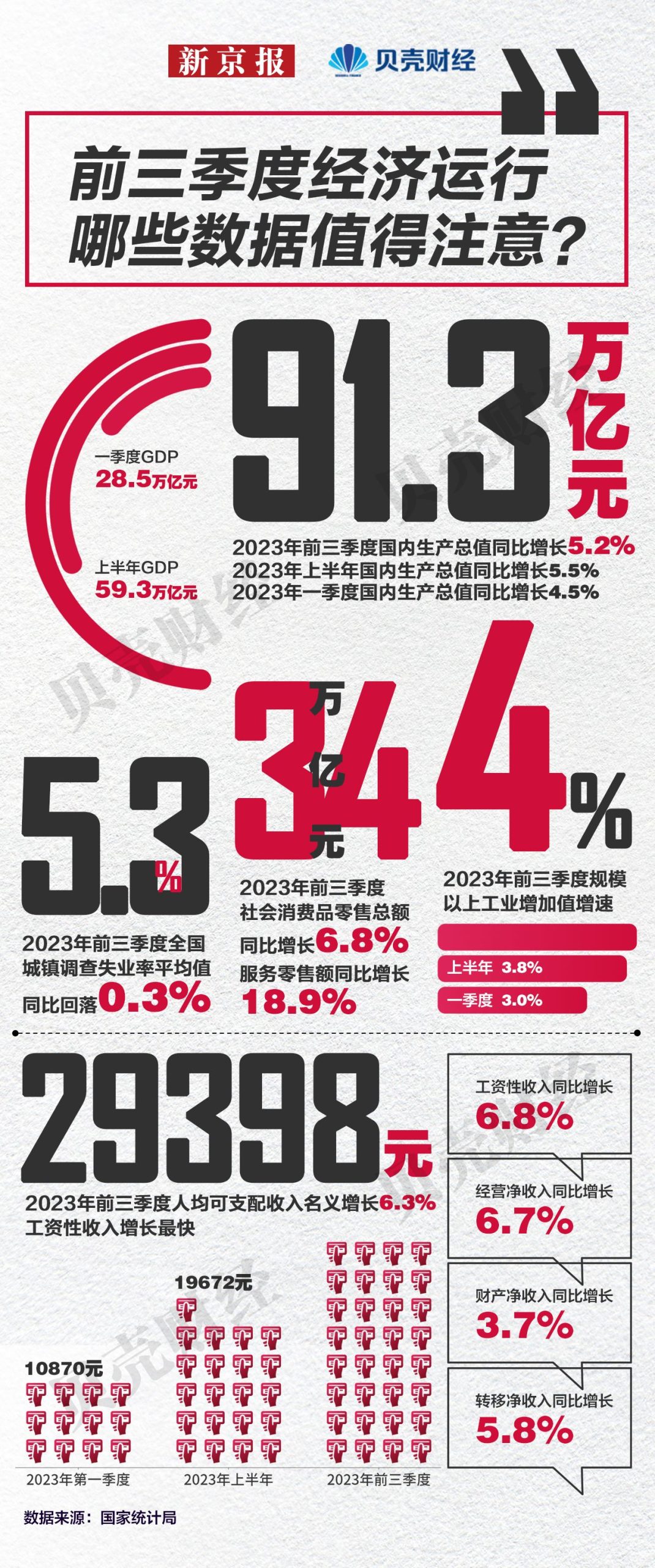
On October 18th, the National Bureau of Statistics disclosed the economic performance in the third quarter. In the first three quarters, the gross domestic product was 91,302.7 billion yuan, with a year-on-year increase of 5.2% at constant prices. The recovery of industrial production accelerated, and the added value of industrial enterprises above designated size increased by 4% year-on-year, which was higher than that in the first half of the year. Consumption remained active, and the total retail sales of social consumer goods in the first three quarters was 34.2 trillion yuan, up 6.8% year-on-year. (Beijing News) Read the full text > > >
[style]
The 2023 Hangzhou Marathon was postponed to December 17th.
It was decided by the Hangma Organizing Committee that the 2023 Hangzhou Marathon originally planned for November 19th, 2023 (Sunday) will be postponed to December 17th, 2023 (Sunday) at 7: 30am. The route of this year’s Hangzhou Marathon has been slightly adjusted, starting from Huanglong Sports Center and ending at Hangzhou Asian Games Village. I believe that the Asian Games Village will leave a unique "Asian Games memory" for every contestant in Hangzhou and Malaysia. The end of the half marathon and happy run is still the Civic Center and Pinghu Qiuyue. (Hangzhou Marathon) Read the full text > > >
The movie "Rock-solid" broke the box office of 1.2 billion yuan, and temporarily ranked ninth in the annual box office list.
According to the real-time data of Lighthouse Professional Edition, as of 17: 43: 16 on October 18th, the box office of the film "As Hard as a Rock" exceeded 1.2 billion yuan, and the cumulative number of people watching movies was 27.97 million, which also temporarily ranked 9th in this year’s box office list. (Beijing News) Read the full text > > >
[international]
This round of Palestinian-Israeli conflict has caused more than 4,900 deaths on both sides, and more than 1,300 children in the Gaza have died in the conflict.

On October 17th, 2023, local time, the conflict between Palestine and Israel continued in Gaza City, and the "Ahli Arab Hospital" (also known as Baptist Hospital) was attacked by Israeli troops, causing serious casualties. The picture shows the injured being treated in the hospital. Figure /IC photo
The number of casualties caused by the new round of conflict between Palestine and Israel continues to increase. According to the current statistics, as of the afternoon of the 18th, the conflict has caused more than 4,900 deaths on both sides. According to Arab TV local time on the 18th, Palestinian Foreign Minister Maliki said that more than 1,300 children in the Gaza have died in this round of Palestinian-Israeli conflict. (CCTV News)
The US Treasury Department announced sanctions against Hamas members and related individuals and financial institutions.
On October 18th, local time, the Office of Overseas Assets Control (OFAC) of the U.S. Treasury Department announced the imposition of sanctions on 10 major members, agents and financial institutions of Hamas in Gaza, Sudan, Turkey, Algeria and Qatar. It is reported that the assets of sanctioned individuals and entities in the United States and those owned or controlled by Americans will be frozen and must be reported to the Office of Overseas Assets Control of the US Treasury Department. Entities with 50% or more equity of sanctioned targets will also be frozen, and trading activities related to sanctioned targets in the United States will also be banned. (CCTV News) Read the full text > > >
Editor Wei Mian Wei Yue proofreads Lin Zhao.
